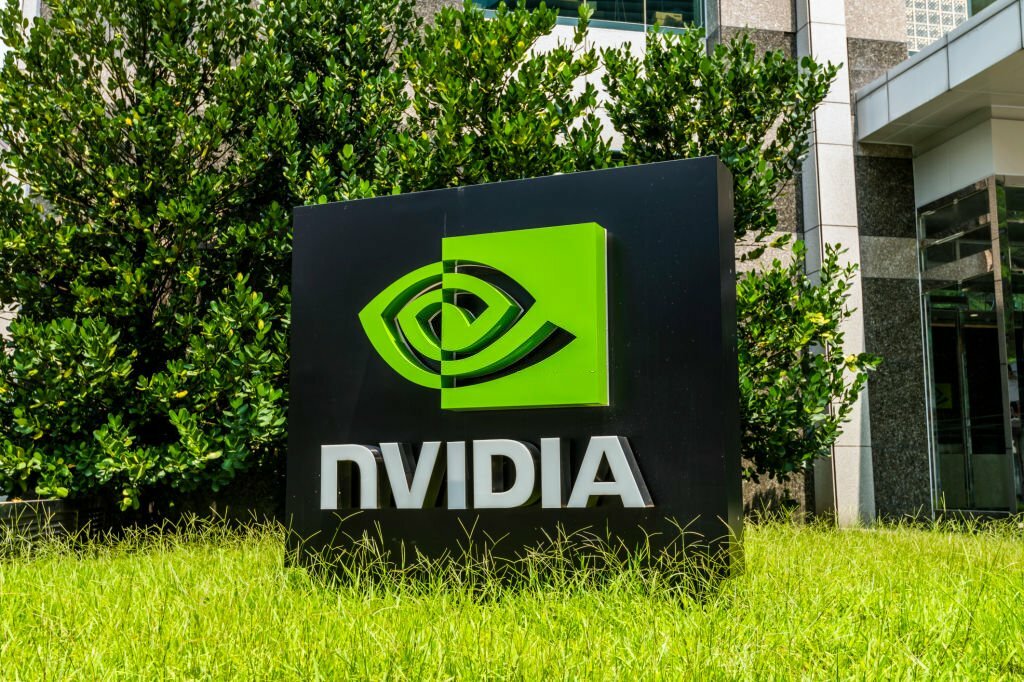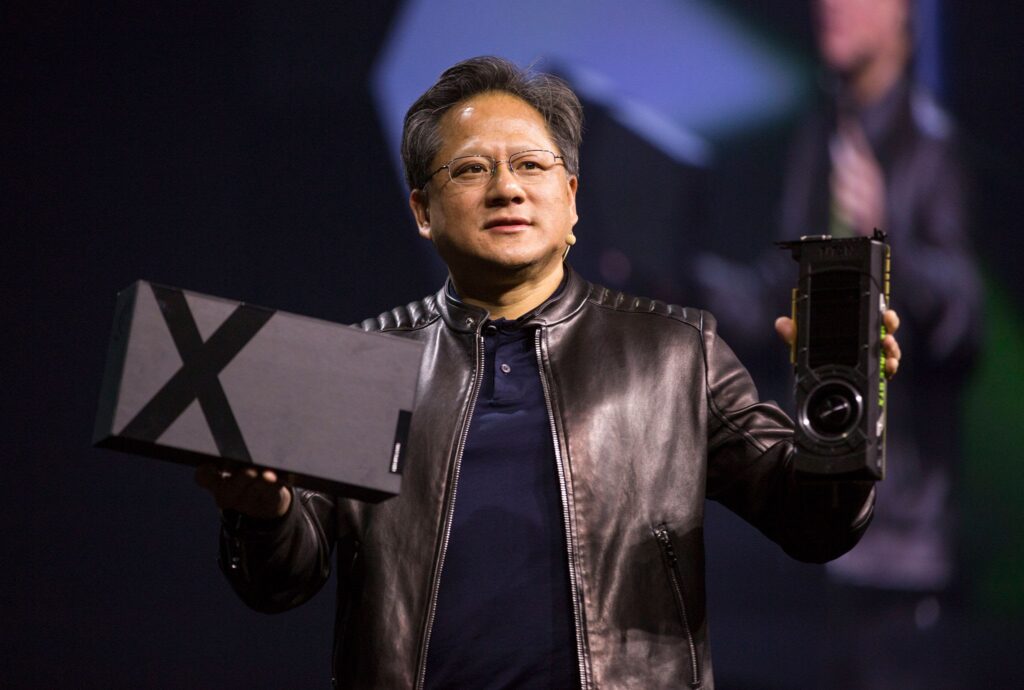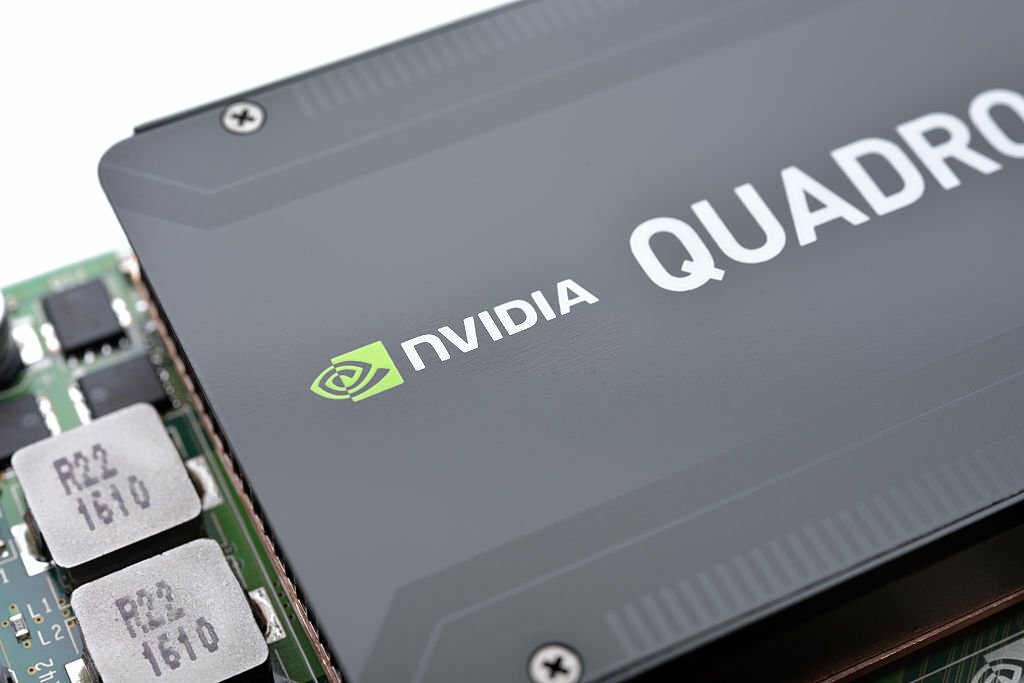NVIDIA has been at the forefront of technological innovation and has played a significant role in shaping the future of artificial intelligence (AI). Jensen Huang, the CEO and co-founder of NVIDIA, has been a visionary leader in this space, and his insights offer a glimpse into the company’s journey and the future of AI.
 Pin
Pin Table of Contents
NVIDIA's Milestones
NVIDIA was initially known for its graphic processing units (GPUs), which were primarily used in gaming and entertainment. However, Huang saw an opportunity to leverage the power of GPUs for AI and deep learning applications. He recognized that the parallel processing capabilities of GPUs could significantly accelerate AI workloads, making them ideal for training and inferencing neural networks.
Under his leadership, NVIDIA has developed a range of AI-focused products and solutions, including the Tesla platform for AI and high-performance computing, and the CUDA programming model for parallel computing on GPUs. These innovations have been instrumental in advancing the field of AI and have had a transformative impact across various industries, such as healthcare, finance, and autonomous vehicles.
 Pin
Pin Jen-Hsun Huang, CEO of Nvidia Corp., shows off a Titan C CPU and GeForce GTX Titan X graphics card during the GPU Technology Conference in San Jose, California. The Titan X CPU utilizes a GeForce GTX Titan X graphics card and features the GM200 graphics processing unit.
(Photo by Kim Kulish/Corbis via Getty Images)
One of the key milestones in NVIDIA’s journey in AI was the introduction of the NVIDIA DGX-1, a purpose-built system for deep learning training. The DGX-1 combined the power of multiple GPUs with specialized software and hardware to deliver unparalleled performance for AI workloads. This marked a significant shift in the way AI research and development was conducted, and it set the stage for further advancements in AI infrastructure.
NVIDIA’s commitment to AI has also been reflected in its strategic partnerships and acquisitions. The company has collaborated with leading technology companies and research institutions to advance AI capabilities and has acquired AI startups to complement its existing portfolio of products and technologies. These efforts have positioned NVIDIA as a key player in the AI ecosystem and have solidified its reputation as a leader in AI innovation.
Looking ahead, Jensen Huang has outlined his vision for the future of AI, emphasizing the importance of developing AI technologies that are accessible, scalable, and energy-efficient. He has highlighted the need for AI to be integrated into every aspect of computing, enabling intelligent automation and decision-making across a wide range of applications.
In addition to his focus on AI, Huang has also identified the potential of AI to drive innovation in other areas, such as healthcare, robotics, and edge computing. He envisions a future where AI will enable personalized medicine, autonomous machines, and real-time processing of data at the edge, opening up new opportunities for growth and discovery.
As NVIDIA continues to invest in AI research and development, Jensen Huang’s insights offer valuable perspectives on the company’s journey and its vision for the future of AI. With a strong foundation in GPU-accelerated computing and a relentless pursuit of innovation, NVIDIA is well-positioned to lead the way in shaping the next era of AI-driven technologies.
 Pin
Pin Insights and perspectives shared by Jensen Huang
Some key insights and perspectives shared by Jensen Huang regarding the future of AI include the belief that AI will continue to revolutionize industries and improve people’s lives, the importance of developing powerful AI hardware and software platforms to enable this transformation, and the potential for AI to drive new breakthroughs in scientific research and technological innovation.
These insights shape NVIDIA’s direction in AI by driving their focus on developing and advancing cutting-edge GPU technology for AI computing, creating robust software frameworks and tools for AI development, and partnering with industry leaders to deploy AI solutions across various sectors. NVIDIA’s emphasis on enabling AI at scale through high-performance computing and deep learning technologies reflects Huang’s vision for the future of AI and its potential impact on the world.
 Pin
Pin The Intricate Process of Manufacturing Nvidia GPUs: A Journey from Design to Innovation
Nvidia is a leading technology company known for its advanced graphics processing units (GPUs) and semiconductor chips. The company’s GPUs are widely used in a variety of applications, including gaming, professional visualization, data center, and automotive industries. But have you ever wondered how these powerful chips are made?
The process of making a Nvidia GPU starts with the design phase. Nvidia’s team of engineers and designers work on creating the architecture and specifications for the GPU. This involves a lot of research and development to ensure the chip meets the performance and efficiency requirements for its intended use.
Once the design is finalized, the next step is to manufacture the GPU. Nvidia relies on a state-of-the-art semiconductor fabrication facility to produce its chips. The manufacturing process involves several key steps, including lithography, etching, doping, and testing.
Lithography is the process of creating a pattern on a silicon wafer using light and photoresist materials. This pattern defines the circuitry and layout of the GPU. Etching is then used to remove the excess material and create the desired features on the wafer.
Doping is the process of adding impurities to the silicon wafer to alter its electrical properties. This is a crucial step in creating the transistors and circuits that make up the GPU. Once the wafer is doped, it goes through a series of tests to ensure it meets the quality and performance standards set by Nvidia.
After the individual chips are manufactured, they are then assembled into the final GPU package. This involves mounting the chips onto a substrate, connecting them with wiring, and encapsulating the whole assembly in a protective casing. The final step is testing the finished GPU to ensure it functions correctly and meets the specifications set by Nvidia.
The process of making a Nvidia GPU involves a combination of advanced engineering, cutting-edge manufacturing techniques, and rigorous testing procedures. It’s a complex and highly technical process that requires precision and attention to detail at every step.
Nvidia’s GPUs are the result of a meticulous and sophisticated manufacturing process that begins with design and culminates in the production of powerful and efficient chips. This dedication to quality and innovation is what sets Nvidia apart as a leader in the technology industry. Whether it’s for gaming, data processing, or visual computing, Nvidia’s GPUs are at the forefront of driving technological advancements.
The Crypto Revolution: How GPUs are Powering the Future
In recent years, GPUs have become increasingly important due to their exceptional flexibility and capability, particularly in the realm of cryptocurrency mining. These powerful processing units have proven to be indispensable in handling complex mathematical calculations, making them a critical component in the generation of digital currencies.
The rise of GPUs has brought about a significant change in the way industries operate, especially in the realm of financial technology. This shift is exemplified by the emergence of a new business model, where significant financial returns can be derived from the energy expended in operating super processing systems that are powered by GPUs. This transition underlines the evolution from traditional general-purpose computing to a more accelerated and specialized form of computing, thanks to the unparalleled capabilities of GPUs.
AI Breakthroughs: NVIDIA Leading the Way
Artificial Intelligence (AI) has become a ubiquitous technology in recent years, transforming industries and revolutionizing the way businesses operate. One company that has been at the forefront of AI breakthroughs is NVIDIA, a global leader in graphics processing units (GPUs) and AI technology.
NVIDIA has been instrumental in driving AI advancements through its innovative products and solutions. One of the key breakthroughs that NVIDIA has achieved is its development of deep learning algorithms and neural network architectures that have significantly improved the performance of AI systems. This has enabled AI to process and interpret complex data at a much faster rate, leading to more accurate and efficient results.
Another major breakthrough from NVIDIA is its development of GPU-accelerated computing, which has greatly enhanced the speed and performance of AI applications. By harnessing the power of GPUs, NVIDIA has been able to accelerate the training and inference processes for AI models, making them more powerful and capable of handling larger and more complex datasets.
NVIDIA has also made significant strides in the field of autonomous vehicles, with its DRIVE platform providing state-of-the-art AI solutions for self-driving cars. The company’s advanced AI algorithms and hardware components have enabled autonomous vehicles to perceive and react to their surroundings with a level of precision and reliability that was previously unattainable.
In addition to its technological advancements, NVIDIA has also played a pivotal role in democratizing AI with its accessible and user-friendly tools and frameworks. The company’s CUDA platform has become a standard for parallel computing, making it easier for developers to harness the power of GPUs for AI applications. NVIDIA’s commitment to open-source initiatives and collaboration with the AI community has further accelerated the adoption and advancement of AI technology.
Looking ahead, NVIDIA continues to push the boundaries of AI with its ongoing research and development efforts. The company’s focus on developing more efficient and scalable AI architectures, as well as its investment in AI-powered healthcare and robotics, demonstrates its commitment to driving the next wave of AI breakthroughs.
NVIDIA has been instrumental in propelling AI technology forward, with its groundbreaking innovations revolutionizing the way AI is developed and deployed. As AI continues to reshape industries and drive innovation, NVIDIA stands at the forefront, leading the way with its cutting-edge AI solutions and breakthrough advancements.
 Pin
Pin Balancing National and Economic Security: The Case of NVIDIA
In the current geopolitical landscape, the issue of balancing national security and economic interests has become increasingly complex. As countries around the world seek to safeguard their technological advancements and intellectual property, they are also faced with the challenge of maintaining robust trade relations and fostering innovation. This delicate balance is especially relevant in the case of NVIDIA, a leading American technology company that has made significant contributions to both the national security and economic prosperity of the United States.
NVIDIA is a global leader in the design and manufacture of graphics processing units (GPUs) for gaming, professional visualization, data centers, and automotive markets. The company’s advanced technology has been instrumental in the development of cutting-edge applications such as artificial intelligence, autonomous vehicles, and high-performance computing. These innovations have not only driven economic growth and job creation in the United States, but have also contributed to the country’s technological superiority and national security capabilities.
At the same time, NVIDIA’s global footprint and extensive network of partners and customers raise important considerations regarding the protection of sensitive technologies and the prevention of unauthorized transfers to potential adversaries. As the U.S. government seeks to safeguard critical technologies from foreign exploitation, it must carefully balance these efforts with the need to maintain a competitive edge in the global marketplace and foster collaboration with international partners.
To address these challenges, it is essential for policymakers to adopt a nuanced approach that leverages targeted regulatory measures and strategic alliances to protect national security interests while promoting the innovation and economic growth that companies like NVIDIA drive. By working closely with industry leaders and leveraging the expertise of government agencies, such as the Department of Defense and the Department of Commerce, the U.S. can develop effective mechanisms for safeguarding critical technologies without stifling innovation or undermining the country’s global leadership in technology and innovation.
It is imperative for the U.S. government to engage in constructive dialogue with its allies and like-minded partners to develop common standards and policies aimed at preventing the illicit transfer of sensitive technologies. By fostering international cooperation and information sharing, the U.S. can build a global consensus on the need to protect critical technologies, while simultaneously ensuring that legitimate trade and collaboration continue to flourish.
The case of NVIDIA serves as a compelling example of the intricate relationship between national security and economic interests. As the U.S. seeks to navigate the complexities of a rapidly evolving global landscape, it is paramount that policymakers take a balanced approach that safeguards critical technologies while fostering innovation and economic prosperity. By closely collaborating with industry leaders and international partners, the U.S. can protect its national security interests while maintaining its position as a global leader in technology and innovation.
The Race for Superior Graphics: Nvidia and Its Competitors
Nvidia has long been a dominant force in the realm of graphics processing units (GPUs), but the competition is heating up as other tech giants enter the fray. As virtual reality, artificial intelligence, and high-definition gaming become increasingly popular, the demand for powerful GPUs is on the rise. This has led to a renewed focus on innovation and performance from Nvidia and its competitors.
One of Nvidia’s primary competitors is AMD, which has been gaining ground in the GPU market with its Radeon series. AMD has been striving to create a more cost-effective alternative to Nvidia’s high-end GPUs while still offering competitive performance. This has led to a healthy rivalry between the two companies, driving them to push the boundaries of GPU technology.
Another major player in the GPU market is Intel, which has recently announced plans to enter the discrete GPU market with its Xe graphics architecture. Intel’s entry into this space could shake up the industry, particularly in the data center and AI sectors where Nvidia currently holds a strong position.
Meanwhile, Qualcomm is also making waves with its Adreno GPUs, which are primarily used in mobile devices. With the growing prevalence of mobile gaming and the increasing demand for high-performance GPUs in smartphones, Qualcomm has become a key player in the graphics market, albeit in a different segment from Nvidia and its traditional competitors.
In addition to these established competitors, there are also start-ups and smaller companies entering the GPU market, each with their own unique approaches to graphics processing. Some of these companies are focusing on specialized GPUs for specific industries, such as AI or automotive applications, while others are looking to disrupt the industry with innovative new architectures.
As the competition in the GPU market intensifies, consumers can expect to see an array of cutting-edge technologies and performance improvements from all the major players. This ongoing rivalry between Nvidia and its competitors is ultimately driving innovation and pushing the boundaries of what is possible in the world of graphics processing. Whether it’s for gaming, data center applications, or AI development, the battle for superior graphics is benefiting consumers and businesses alike.
Nvidia - Appreciating the Craft
Nvidia is not just another tech company. It is a company that deeply understands and appreciates the craft of creating cutting-edge graphics processing units (GPUs) and revolutionizing the way we interact with technology. Founded in 1993, Nvidia has consistently demonstrated a dedication to their craft, surpassing the expectations of the industry and users alike.
From their origins as a graphics chip manufacturer, Nvidia has evolved into a powerhouse in the gaming and technology industry. Their commitment to pushing the boundaries of visual computing has propelled them to the forefront of the tech world. They have created a niche for themselves by constantly innovating and redefining what is possible in the world of GPU technology.
Nvidia’s deep understanding of their craft can be seen in their commitment to research and development. They invest heavily in cutting-edge technologies and continue to push the boundaries of what is possible in the world of visual computing. Their GPUs have not only revolutionized the gaming industry but also found applications in fields such as artificial intelligence, data center management, and autonomous vehicles. This ability to adapt and transform their craft has allowed Nvidia to stay ahead of the competition and lead the charge in technological advancement.
Nvidia’s appreciation for their craft extends to the impact it has on society. They have consistently demonstrated a commitment to sustainability and ethical business practices, setting an example for other tech companies. Their dedication to creating efficient and environmentally friendly GPUs showcases their understanding of the larger impact their craft has on the world.
As technology continues to progress at an unprecedented rate, Nvidia’s dedication to their craft will be paramount in ensuring they continue to offer unique value to society. By understanding their origins, current state, and future direction, Nvidia ensures that they remain at the forefront of the industry, pushing the boundaries of what is possible. Their deep appreciation and understanding of their craft have allowed them to consistently deliver next-level technology that has not only changed the way we experience gaming but also revolutionized the way we interact with technology as a whole.
A successful company is one that deeply appreciates and understands its craft. Nvidia’s dedication to pushing the boundaries of visual computing, their commitment to research and development, and their focus on sustainability showcases the unique value they offer to society. As they continue to evolve and lead the charge in technological advancement, Nvidia’s deep appreciation and understanding of their craft will undoubtedly cement their place as an industry leader for years to come.
Nvidia - Building Success
Nvidia, the leading technology company, has seen immense success in the competitive world of graphics processing units (GPU) and artificial intelligence. Founded in 1993 by Jensen Huang, Chris Malachowsky, and Curtis Priem, Nvidia has grown into a multi-billion dollar company with a global presence. But what sets Nvidia apart from its competitors and has allowed it to maintain its success over the years?
Building a successful company requires hard work, dedication, and adaptability. This is evident in Nvidia’s journey, as the company has continuously evolved its products and services to meet the changing needs of the tech industry. From its early days as a provider of graphics processors for gaming, Nvidia has expanded its portfolio to include solutions for artificial intelligence, data centers, and autonomous vehicles. By staying ahead of the curve and anticipating market trends, Nvidia has been able to secure its position as a leader in the technology sector.
Success also hinges on surrounding oneself with talented individuals and having a strong team. Nvidia has always been committed to hiring the best and brightest minds in technology, and this has undoubtedly contributed to the company’s success. By fostering a culture of innovation and collaboration, Nvidia has been able to push the boundaries of what is possible in the world of graphics and AI. The importance of human capital in business growth cannot be overstated, and Nvidia is a prime example of how a strong team can propel a company to new heights.
One of the key factors in Nvidia’s success has been its ability to adapt to the changing needs of the technology industry. As the demand for AI and data processing continues to grow, Nvidia has positioned itself as a leader in these areas, constantly innovating and developing new solutions to meet the evolving needs of its customers. By staying at the forefront of technology, Nvidia has been able to maintain its position as a market leader and drive continued growth.
Nvidia is a shining example of how hard work, dedication, and adaptability can lead to success in the business world. By surrounding itself with a talented team and constantly evolving its product offerings, Nvidia has been able to maintain its position as a leader in the technology industry. As the company continues to push the boundaries of what is possible in graphics and AI, it seems clear that Nvidia will continue to build on its success for years to come.





























